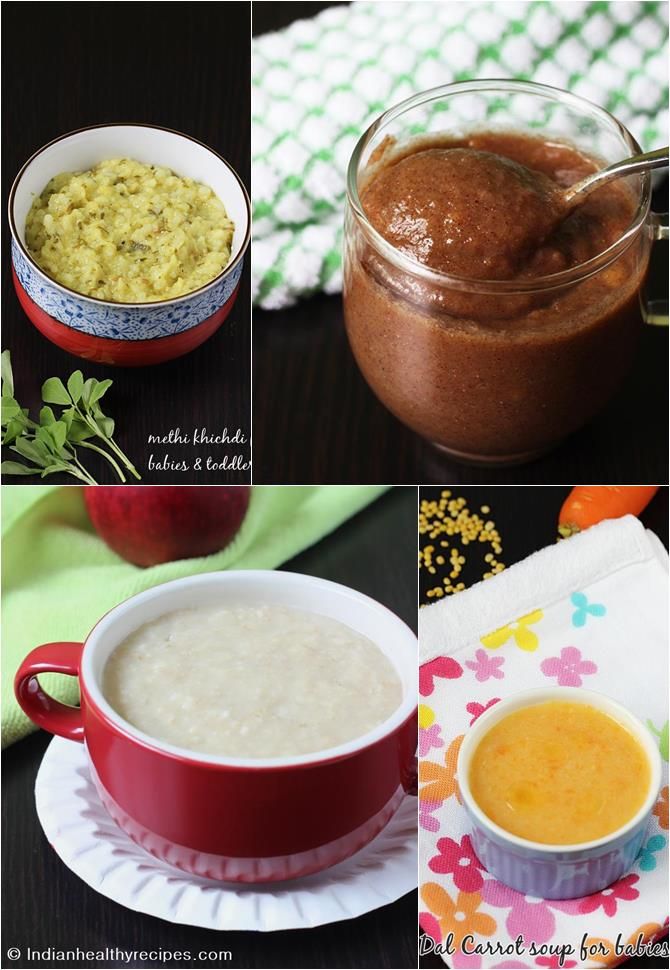Table food for babies with no teeth
List of 15 Yummy Finger Foods for Baby with No Teeth
For many parents, feeding their babies is a herculean task. However, as the babies grow up, they like trying out new tastes and textures. No longer will they prefer only mashed food and purees. This is when finger foods should be introduced to your baby. Finger foods for babies do more than just providing nutrition. They help babies work on their fine motor skills too. Wondering which finger foods you could feed your child? Read on to know 15 healthy finger foods that your baby can enjoy even if he doesn’t have teeth yet.
Video : 5 Delicious Finger Food Ideas for Babies With No Teeth
15 Healthy Finger Foods for a Baby Without Teeth
Introducing finger foods to your baby can be a bit of a challenge for parents. They need to be ready for all the mess, allergies or even choking hazards once your baby starts eating finger food. So, does that mean finger foods are not ideal for babies without any teeth? No, finger foods are ideal for babies without teeth if they can pick them up easily and mash them between the gums.
If you are wondering which finger foods you can prepare for your little one, we have you covered. Below are some finger food ideas for babies without teeth. These can be alternated with the other food ideas you have to provide a nutritious snack to you little one every day. Do not miss out on providing your baby calcium-rich foods either, to help his bones become stronger.
1. Pasta
Pasta can be the first finger food for babies with no teeth since it has a very subtle taste. Pasta, when overcooked tends to get very soft, making it easy for babies without teeth to eat it.
Ingredients:
- Penne pasta/ shell-shaped pasta
- Olive oil/ butter
- Tomato puree
How to Make:
- Boil water and cook the pasta till it is soft and mushy.

- In a pan, put a little butter or olive oil and add the cooked pasta. Stir for a minute and then add the tomato puree.
- Let the pasta cool before you serve it to your baby.
2. Homemade Baby Biscuits
Homemade baby biscuits are a great snack for babies 8 months and above. The recipe is for 18-20 biscuits approximately. You may increase the measure to the ingredients if you’d like to make extra biscuits. Also, remember to skip the ingredients your baby is allergic to.
Ingredients:
- ¼ cup ground oats
- ½ cup butter/peanut butter
- 2 tbsp ground flax seeds
- 1 cup chickpea flour
- 1/3 cup maple syrup or honey
- 1 banana (mashed)
- 1 tsp baking soda
- 2 tsp vanilla essence
- 1–2 tbsp water (if required)
How to Make:
- Take a cup of chickpea flour and keep it in the freezer for about half an hour (this will help in creating the right consistency and texture for baking).

- Meanwhile, mix the butter, honey/maple syrup, mashed banana, vanilla essence and baking soda together.
- In another bowl, take the chickpea flour.
- Add the ground oats and ground flax seeds.
- Now using your hands, mix it together till you get a cookie dough-like texture.
- Make small balls with the dough and keep them aside.
- Take a baking tray and lay a butter paper on it.
- Flatten the cookie dough balls on the butter paper.
- Bake the cookies for approximately 12 minutes in a preheated oven at 350 degrees Fahrenheit or 175 degree Celsius.
- After 12 minutes, take them out and gently press on the centre of each biscuit with a fork to get rid of air pockets.
- Give one of the cookies to your baby only after it has completely cooled down.
3. Baby Quiche Cakes
Baby quiche cakes are a good way to feed some extra vegetables to your baby. These cakes can be made in batches and stored for about 3 days in the fridge if you keep them in an airtight container. Let’s find out how they are made.
Let’s find out how they are made.
Ingredients:
- 2-3 cups whole wheat flour
- 1/4th cup of olive oil
- 3-5 cups of diced/ chopped vegetables (carrot, spinach, broccoli/ cauliflower, peas, etc.)
- 4 bananas (mashed)
- 1 cup of grated cheddar cheese
- 1 ½ cups of yoghurt
- 1 tbsp baking powder
- Salt to taste (optional)
How to Make:
- First, steam the chopped/diced vegetables.
- Prepare a batter by combining the whole wheat flour, yoghurt, baking powder, beaten eggs, cheddar cheese, olive oil, and salt.
- Add the vegetables to the batter.
- Transfer the batter into a greased muffin tray.
- Bake the cakes at 180 degrees Celsius for 20 minutes or until they turn golden brown and firm.
- Once the cakes cool, you can cut or break them into smaller pieces and give some to your baby.
4. Berry Bites
This recipe requires few ingredients and is sure to make your little strawberry lover happy.
Ingredients:
- 3 bananas
- A handful of strawberries/ blueberries
- 1/4 cup milk
- 1 teaspoon of butter (for greasing the muffin tray)
How to Make:
- Mash 3 bananas in a bowl.
- Add some milk to it and mix well.
- Grease a mini muffin tray with butter.
- Put a few strawberries/blueberries in each muffin slot.
- Then, pour the milk and banana mixture.
- Bake the muffins for about 15 minutes or until the eggs are cooked.
- Once the muffins cool down, pop them out.
- You may cut in in smaller pieces before giving it to your baby to enjoy.
5. Sweet Potato Fries
Sweet potato fries are another simple recipe with just 3 ingredients. This recipe is perfect when you are pressed for time and need to give something healthy to your baby to munch on.
Ingredients:
- Sweet potatoes (medium/ large)
- 1/4th cup of olive oil
- A pinch of cinnamon powder (optional)
How to Make:
- Preheat the oven at 400 degrees Fahrenheit.

- Clean and peel the sweet potatoes.
- Cut them into thin strips.
- Put some cinnamon powder on them.
- Place the strips of sweet potato on a baking tray over some baking sheet.
- Bake for 30–45 minutes or till they are tender.
- Serve when they completely cool down.
6. Banana Pancakes
Include some goodness of bananas into your baby’s snacktime with these banana pancakes. They are easy to make, and your little one is sure to love them.
Ingredients:
- 1 cup whole wheat flour
- ½ cup milk
- Water (if required)
- 1 ripe banana
- Butter (optional)
- Honey/maple syrup (optional)
How to Make:
- Slice or mash the banana in a bowl.
- Mix the whole wheat flour and milk together.
- Add the mashed bananas into the wheat flour mix.
- You may add some water to adjust the consistency.
- Pour a ladle of the pancake mix on to a nonstick pan and cook the pancakes till they are golden brown.
 You may add some butter if required.
You may add some butter if required. - Let the pancakes cool down.
- Cut them in strips or small pieces that your baby can hold and eat.
- You may also drizzle some honey or maple syrup on the pancakes to enhance the taste.
7. Cooked Veggies
Cooked vegetables make excellent baby finger foods.
Ingredients:
- 1 sweet potato (peeled and cut into small sticks)
- 1 small carrot (peeled and cut into small sticks)
- 4-5 small florets of broccoli
How to Make:
- Steam or roast the veggies until soft and tender.
- Transfer it to a plate and let your baby enjoy.
8. Idli
Idli is a staple in many households. It is not only easy to make but is also highly nutritious for your little one. Here’s how you can make some for your baby.
Ingredients:
- 1 ½ cups of parboiled rice
- ½ cup urad dal
- Salt to taste (optional)
How to Make:
- Wash the rice and dal and soak it for 5-6 hours in separate utensils.
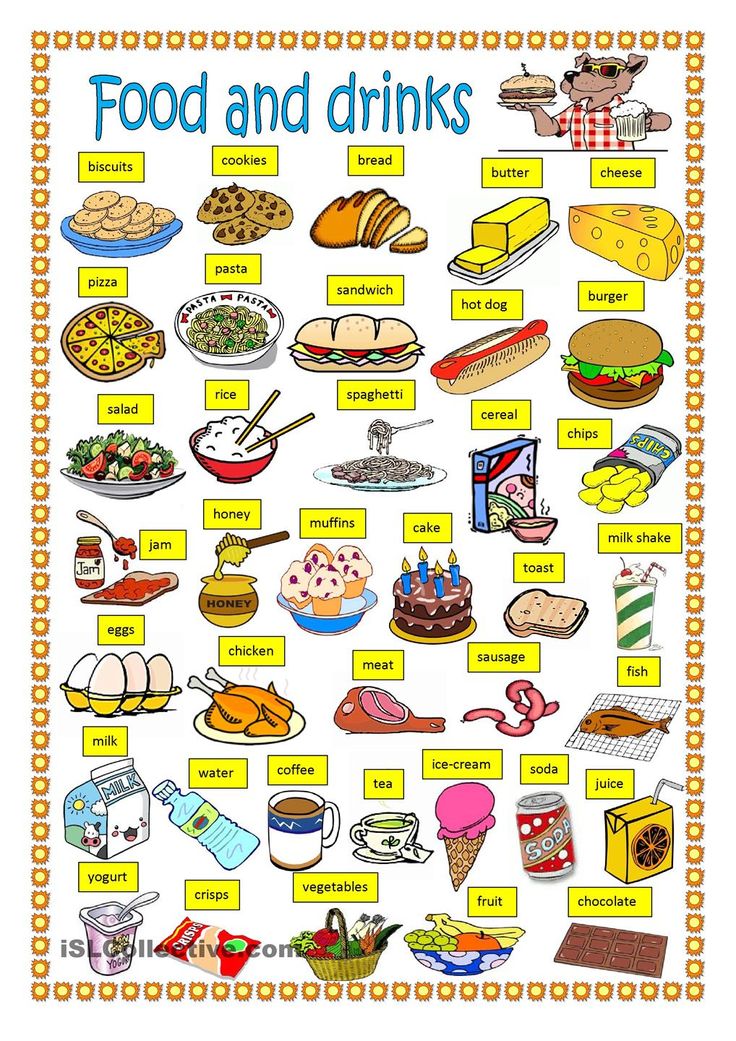
- Then grind the dal to make a smooth paste and grind the rice a little coarse.
- Mix the two ingredients together and add a bit of salt.
- Add some water to adjust the consistency. The batter should have a flowing consistency, not runny.
- Leave it overnight to ferment.
- After the mixture is fermented, steam it in an idli steamer.
- Cut the idli into small pieces when they cool down and give it to your baby.
9. Steamed Dosa
This is another variety of finger food your little one is sure to enjoy. Let’s check out what you need to make some steamed dosa for your baby.
Ingredients:
- 1 cup parboiled rice or dosa rice
- 1/3 cup urad dal
- Few fenugreek seeds (methi seeds)
- 1 tbsp of flattened rice (avalakki)
- Ghee (as required)
How to Make:
- Soak the rice, fenugreek seeds, and flattened rice together in one vessel; and the urad dal in another utensil.
 Soak the ingredients for at least three hours.
Soak the ingredients for at least three hours. - Grind the rice, fenugreek seeds, and flattened rice to make a fine paste.
- Then grind the urad dal to make a fine paste.
- Mix the rice and the dal mixture together.
- Add water to adjust the consistency, which should not be too thick or too thin.
- Let the batter ferment for 6-8 hours.
- To make the dosa, heat a nonstick pan.
- Put a dollop of the mixture and spread it out in a small circle on the pan.
- Add some ghee if needed and let it cook till the base becomes golden brown in colour and you see some bubbles on the top.
- When the dosa is cooked, remove it in a plate and cut it into small pieces for your baby to eat.
10. Fruit Salad
Yes, fruit salad can also be a good finger-food dish for your little one. You can add as many fruits as you want to this dish and let your baby enjoy varied tastes and textures. You may choose to skip a few fruits if you think your baby could choke on them or leave the ones he is allergic to.
You may choose to skip a few fruits if you think your baby could choke on them or leave the ones he is allergic to.
Ingredients:
- Various types of fruits, like an apple, a banana, kiwis, strawberries, etc.
- Black salt (optional)
How to Make:
- Peel and cut the fruits, small enough for the baby to chew.
- Add little black salt and give it a good mix and let your baby enjoy it.
11. Cheesy Crackers
Cheesy crackers are perfect if you want to add a little crunchy texture that sort of melts in the mouth in no time. This recipe is perfect for your baby’s snack time.
Ingredients:
- 1 cup plain flour
- 1 cup grated cheese
- 2 tbsp unsalted butter
- Water, if required
How to Make:
- Beat the butter and cheese together until it becomes soft and fluffy. It is best to use an electric blender to do this.

- Add the flour bit by bit to the beaten mixture and mix until you get a crumbly mixture.
- Add some water to make a moist dough.
- Wrap the dough in a cling film and keep it in the fridge for an hour.
- After an hour, remove the film and roll out the dough. Using small round cutters, cut out small round biscuits and prick them with a fork.
- Then, bake the crackers in a preheated oven for 15 minutes at 180 degrees Celcius (till the crackers turn golden brown).
- Let your baby munch on these crackers when they are cooled down to room temperature.
12. Zucchini Chips
This recipe is a great alternative for other unhealthy chips. Here’s what you need to make them.
Ingredients:
- 1 zucchini (cut into thin strips)
- 1 tbsp olive oil
How to Make:
- Preheat the oven to 100-110 degree Celcius.
- Drizzle some olive oil over the zucchini slices.
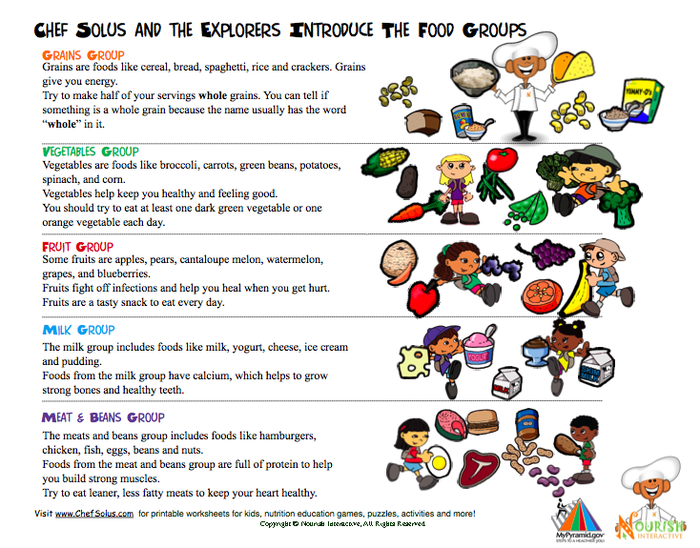
- Place the zucchini slices in a single layer on a baking tray.
- Bake the chips for 30 minutes, take the tray out and flip all the chips.
- Bake for another 30 minutes.
- Let the chips cool before you let your baby have some.
13. French Toast Fingers
French toast fingers can be a breakfast recipe or an evening snack. It is a delicious way to feed some milk and bread to your little one. This recipe usually has eggs in them but if your little one is under 1 year, you should avoid adding eggs. You can use corn starch instead. Here’s what you need for some french toast.
Ingredients:
- 1 tbsp corn starch
- 1-2 tbsp of milk
- 2-3 slices of whole wheat bread
- A pinch of salt (optional)
How to Make:
- Take the milk and salt in a bowl and add corn starch to it. Mix well.
- Trim down the crust from each slice of bread.
- Heat a pan on medium flame.
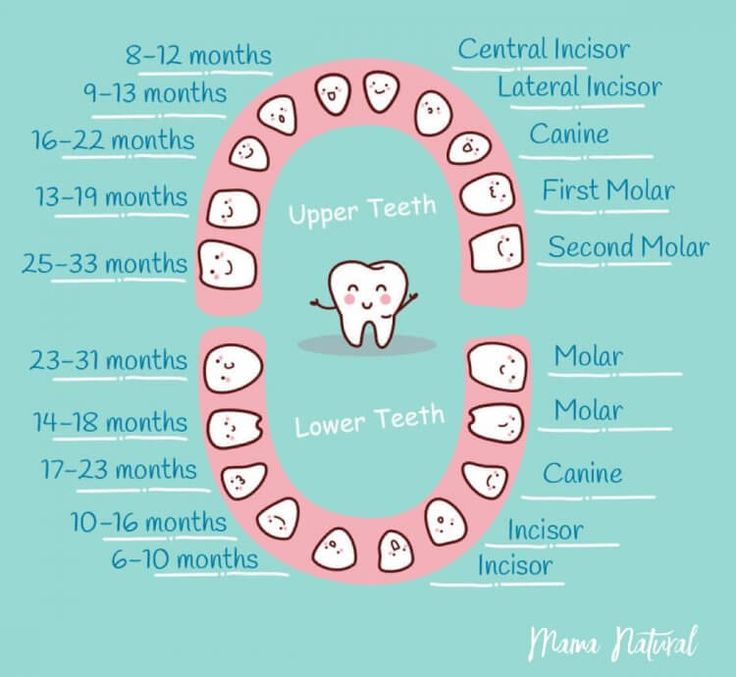
- Lightly grease the pan with butter.
- Dip a slice of bread in the corn starch and milk mixture.
- Remove it immediately and fry it in the pan till it turns golden brown on both sides.
- Cut the slice in 3 to 4 strips and let your baby have it when it cools down.
14. Vegetable Parathas
Vegetable parathas are a great way to feed your baby most of the vegetables he resists. Make them in smaller sizes, and you don’t have to worry about cutting them for him. Here’s what you need to make some vegetable parathas.
Ingredients:
- 1/2 cup of mashed vegetables of your choice
- 1 cup of wheat flour
- Oil/ butter
- A pinch of salt (optional)
How to Make:
- Mix the vegetable mash with wheat flour.
- Add some water and make a soft dough.
- Roll out small round flatbreads with a rolling pin.
- Heat a pan and grease it with oil/butter.

- Cook both sides of the paratha on a medium flame.
- Serve when the parathas cool down.
15. Paneer Sticks
Paneer sticks are a great way to add some protein into your baby’s snack time. Read on to know how you can make this recipe.
Ingredients:
- Paneer (cottage cheese)
- Ghee/oil
- A pinch of salt (optional)
- A pinch of turmeric (optional)
How to Make:
- Cut the paneer into long strips.
- You may marinate the strips with a pinch of salt and turmeric if you wish to.
- In a pan, put a little oil or ghee.
- Lightly sauté the paneer strips over medium heat until they turn golden brown.
- Bring the temperature down before you feed paneer sticks to your baby.
Introducing finger foods to babies is a good way to get the baby used to different types of tastes and textures. Finger foods improve the baby’s coordination skills and encourage self-feeding. With the 15 finger food recipes above, you can now explore your baby’s taste and liking.
Finger foods improve the baby’s coordination skills and encourage self-feeding. With the 15 finger food recipes above, you can now explore your baby’s taste and liking.
Also Read: 7 Solid Foods for a Baby
50 Delicious Foods for 1 year old with few teeth
When your baby’s first little tooth erupts, it gives rise to mixed emotions. On one hand, there’s joy, because your little one is growing and on the other hand, there’s horror, if you’re still breastfeeding! For most babies, the first tooth makes an appearance anywhere from four months onward and some babies are even born with teeth. On the other end of the spectrum, you may have a late bloomer, whose first tooth takes its own sweet time, maybe even till he’s a year old! Here are 50 foods for 1 year old with few teeth.
50 foods for 1 year old with few teeth
Fruit Finger foods for babies without teeth
Vegetable Finger Foods for Babies without teeth
Breakfast Recipes for Babies without Teeth
Lunch/Dinner Recipes for Babies without Teeth
Snack Finger Food Recipes for Babies without Teeth
Dessert recipes for Babies without Teeth
Tips for feeding babies without teeth/foods for 1 year old with few teeth
Frequently Asked Questions
Can you give finger foods to baby with no teeth?
What can my baby eat with 2 teeth?
What can I feed my 1 year old with no teeth?
What should 1 year old be eating?
Buy Healthy Nutritious Baby, Toddler food made by our own Doctor Mom !
But you’re obviously not going to wait till his first birthday to start solids! Since the recommended age for starting to wean is 6 months, many babies don’t depend upon their teeth to eat.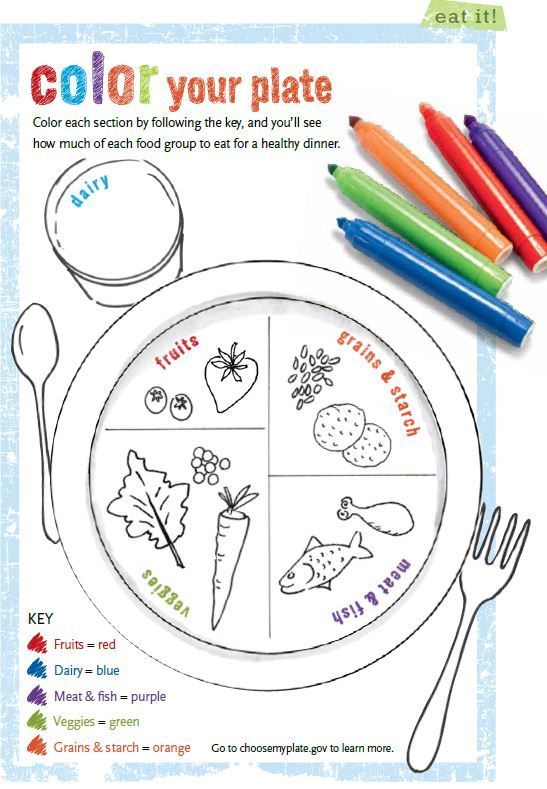 Besides, the first teeth that appear are usually the front teeth, which aren’t used for chewing anyway. (Their gums are enough for that, which your poor nipples probably know by now!)
Besides, the first teeth that appear are usually the front teeth, which aren’t used for chewing anyway. (Their gums are enough for that, which your poor nipples probably know by now!)
For most babies till the age of 8 months, the puree and porridge phase goes by smoothly. But many Moms worry about their child’s diet after this phase, when they start thinking about introducing lumpier textures in their baby’s diet. Now you don’t need to worry if your baby still doesn’t have any teeth yet – we assure you, he’s not going to starve! Keep breastfeeding him for as long as you want, and as for foods, we’ve drawn up a list of 50 foods for babies without teeth , even if he’s still waiting for that first tooth!
50 foods for 1 year old with few teeth
Fruit Finger foods for babies without teeth
Most fruits can be fed directly, as long as they’re ripe. For starters, avoid the peel and ensure there are no seeds. For harder fruits, you can stew them for a few minutes to make them soft. These are finger foods for 6 month old baby with no teeth
These are finger foods for 6 month old baby with no teeth
1. Bananas – Can be fed as it is, just ensure that it is ripe enough
2. Avocado – Go for perfectly ripe avocados, or it’ll be too hard for baby
3. Peach – Feed ripe peaches directly
4. Mango – Go for ripe ones, but avoid the extremely squishy ones
5. Strawberries – Hull before offering to baby
6. Watermelon – Remove the seeds and ensure only the red parts are given
7. Pear – Peel and give baby; if it seems to hard, stew it for some time
8. Apple – Peel before giving baby; if the apple is too crunchy, stew it first
9. Muskmelon – Can be given directly, if it is ripe and soft enough
Vegetable Finger Foods for Babies without teeth
Vegetables are hard for babies without teeth to eat directly, so will require some steaming or boiling. Cook till just soft and not any more, or else they’ll turn into mush and won’t be the texture you’re looking for. These are good for finger foods for 7 month old baby with 2 teeth.
10. Carrot – steam or boil to make it soft, but don’t overcook
11. Cauliflower – Roast or steam; take care to prevent burning
12. Broccoli – Roast or steam lightly; it’ll crumble if overcooked
13. Potato – Boil or steam well till soft
14. Pumpkin – Cook for a short while till the cubes are just soft
15. Zucchini – Steam or cook lightly till soft
16. Beetroot – Steam or boil till quite soft
Breakfast Recipes for Babies without Teeth
Many of these breakfast ideas can be made for the whole family or older kids as well. Choose from Indian and other cuisines so your baby gets used to sweet and savory breakfasts. You can add fruit on the side as well. These are good foods for toddlers with few teeth
17. Eggless Apple Whole Wheat Pancake – You can skip the salt if you like
18. Banana Toast – You can also try almond milk
19. Waffles – You can use coconut milk or almond milk to make these
20. Vegetable Idli – You can start with only grated carrot and add more vegetables later on
21. Blueberry Oat Muffins – Substitute the milk with almond milk or baby formula
Blueberry Oat Muffins – Substitute the milk with almond milk or baby formula
22. Scrambled Eggs – You can use coconut milk instead, and skip the salt
23. Oat Cereal – You can add pureed fruit for more bulk
24. Baby Omelette – You can skip the milk or add formula
25. Steamed Dosa – Serve this with chutney powder for babies
26. Banana Pancakes – Make your own pancake batter and use
Lunch/Dinner Recipes for Babies without Teeth
Meals like lunch and dinner seem to be the biggest challenge for Moms of babies with no teeth, but there are many options. Adjust the salt content when you cook for baby – try adding spices instead to flavor the food. You can add all these foods in your 1 year old baby food menu
27. Flavored Paneer – Make sure the paneer is soft and not rubbery
28. Chicken Carrot Meatballs – You can also try plain chicken meatballs
29. Butternut Squash Risotto – You can use any short grained rice
30. Sweet Potato and Lentil Croquettes – Opt for cheese with less salt
31. Butternut Mac and Cheese – Skip the salt and curry, you can also replace the thyme with fresh herbs
Butternut Mac and Cheese – Skip the salt and curry, you can also replace the thyme with fresh herbs
32. Mini Aloo Paratha – Skip the salt; later you can try adding peas to the filling
33. Carrot Khichdi – You can also try this with beetroot
34. Bolognese Pasta – You can use chicken mince
35. Ghee Rice – Use homemade ghee for better results
36. Chicken Nuggets – You can use turkey or chicken here, be sure that you’re using boneless pieces
These are a few of best delicious foods for 1 year old with few teeth.
Snack Finger Food Recipes for Babies without Teeth
If you’re trying to get baby to eat on a schedule, you can offer her these snacks when she gets hungry in between. Try to balance it like this: if she hasn’t had any veggies all day, try with a veggie snack.These are perfect finger foods for 1 year old
37. Soft Cheese
38. Sweet Potato Fries – Serve with homemade tomato sauce
39. Cauliflower Nuggets – Skip the salt; substitute breadcrumbs with powdered baby cereal
40. Spinach Fritters – Skip the chillies and chilly powder
Spinach Fritters – Skip the chillies and chilly powder
41. Baked Avocado Fries – Substitute bread crumbs with powdered baby cereal
42. Pumpkin Sooji Fingers – Serve with homemade tomato sauce
43. Banana Oatmeal Fingers – You can also add a little of our Dry Fruit Powder
44. Broccoli Cheese Nuggets – Substitute bread crumbs with powdered baby cereal and use cheese with less salt
Dessert recipes for Babies without Teeth
While you don’t need to make a sweet dish a daily affair, once in a while even baby deserves a treat! Making them less sweet will prevent a sweet tooth later, whenever the teeth come in! These are perfect finger foods for 9 month old with no teeth
45. Carrot Cake – Skip the soda, and use almond or coconut milk
46. Samai Payasam – You can add a small amount of the dry fruit powder for taste
47. Fruit Yogurt – Avoid yogurt that is too sour
48. Frozen Applesauce Treats – Get the applesauce recipe here
49. Egg Pudding – Substitute the milk with coconut milk or almond milk
Egg Pudding – Substitute the milk with coconut milk or almond milk
50. Wheat Halwa – Try not to make it too runny to give baby a chance to chew
Tips for feeding babies without teeth/foods for 1 year old with few teeth
1. Check the age recommendation on each recipe before feeding your baby.
2. Make sure you follow the 3 day rule with all new foods to be aware of any allergy.
3. Always be in the room with your baby when he’s eating.
4. With a new food, introduce small amounts at a time.
5. In case of any doubt, consult a doctor.
Most babies will find a way to gnaw on their food, chew on it at the back of their mouths and swallow. They generally have a natural gagging reflex to prevent choking, so they’ll spit out food that’s may be dangerous – don’t force it back down. With some trial and error, you’ll soon find that your baby is able to enjoy most foods – you’ll know when you see that loving toothless grin!
Hope this huge list of foods for 1 year old with few teeth was helpful for you, please let us know your queries in comments.
Frequently Asked Questions
Can you give finger foods to baby with no teeth?
Yes, we can give finger foods to baby with no teeth. As baby's gums are very strong, they can easily chew on soft finger foods with ease. In this article we have listed 50 foods for babies without teeth
What can my baby eat with 2 teeth?
Here are the list of foods that your baby can eat with 2 teeth - soft fruits, soft steamed vegetables, pancakes, soft dosas, mac and cheese, khichdi etc. we have compiled a interesting list of 50 foods for babies with few teeth
What can I feed my 1 year old with no teeth?
Here are the list of foods that you can give your 1 year old baby with no teeth - soft fruits, soft steamed vegetables, pancakes, soft dosas, mac and cheese, khichdi etc. we have compiled a interesting list of 50 foods for 1 year old baby with no teeth.
What should 1 year old be eating?
A 1 year old baby can eat all the foods that the family eats with less spice and salt
Buy Healthy Nutritious Baby, Toddler food made by our own Doctor Mom !
Shop now!150 dishes with step by step photos
Recipes according to GOST for children in kindergarten from 1 to 7 years. Proven recipes with step by step photos, calories and cooking time. Breakfasts for children, lunches, dinners
Proven recipes with step by step photos, calories and cooking time. Breakfasts for children, lunches, dinners
Children are often reluctant to eat in kindergarten. The food is unusual, not homemade, “strange”.
But it often happens the other way around: “I want it to be like in a kindergarten!”. If this is your case, then this collection of kindergarten-style recipes is perfect for you and your child. Read more
Quince has a pleasant aroma and delicate fruity taste, and can be used to make a variety of dishes, including delicious desserts.
With or without apples, with jam or sour cream, these pancakes are good for everyone.
Sauerkraut soup like in kindergarten is recommended for older children.
Kindergarten-style cheese omelette is a wonderful breakfast for the whole family. Due to the presence of cheese in the recipe, the omelet is not bland, so parents will also like it.
Oranges are citrus fruits that we see on the shelves of shops all year round.
Fish baked in an omelette like in a kindergarten - a dish that is absolutely predictable in taste.
So many parents experience their children's dislike for vegetables, and this is often frustrating.
Adding another great soup to my kindergarten recipe box. Bean dishes are always hearty and healthy, and green peas, moreover, not only cook quickly, but also please with their beautiful green color.
After a year, the children's menu expands significantly and one of the first dishes that are introduced into the diet of babies is puree soups.
Pretty satisfying, thanks to potatoes, and fresh, thanks to cucumber, the salad will surely appeal to children.
In winter and spring, it is recommended to introduce dried fruits into the children's diet, since fresh fruits at this time of the year contain much less vitamins and nutrients.
Another salad in the piggy bank of recipes according to the kindergarten's technological maps.
From the age of about a year, fruits are introduced into the child's diet. Of course, if a child has few teeth and still cannot chew pieces, then we can only talk about fruit purees.
I would never have thought that rabbit meatballs like in kindergarten can be so tender and juicy!
Carrots stewed with rice and prunes, like in kindergarten - hearty, tasty, slightly sweet and, thanks to prunes, very fragrant dish.
Almost everyone remembers this pasta and cottage cheese casserole, it was a frequent guest on the tables in many kindergartens.
Boiled pasta baked with eggs, as in kindergarten, is suitable not only for a children's table, but can also be an interesting side dish for people on a diet (suitable for diets No. 3, No. 4c, diets No. 6, 7, 8, 10 , 11 and 15).
Soup-puree from zucchini, like in kindergarten, turns out to be very tender, calm, pleasant to the taste.
How many children love cauliflower? I don't know them :) Usually, the very smell of boiled cauliflower already drives the children out of the kitchen, but not in this case.
Fish patties with vegetables baked like in kindergarten - quite an interesting dish.
Delicious and fragrant garnish with a golden crust is potatoes baked in sour cream, like in a kindergarten.
Now even small children know that it is healthy to eat vegetables, but few people realize that the color of these vegetables is also of great importance.
Delicious, hearty and healthy chopped chicken fillet with scrambled eggs and vegetables, cooked like in a kindergarten, the whole family will like it.
Using the most common and familiar products in every kitchen, let's cook krupenik like in kindergarten.
Children are often reluctant to eat in kindergarten. The food is unusual, not homemade, “strange”.
But it often happens the other way around: “I want it like in a kindergarten!”. If this is your case, then this collection of kindergarten-style recipes is perfect for you and your child.
If this is your case, then this collection of kindergarten-style recipes is perfect for you and your child.
In addition, all the recipes from this collection are prepared according to technological maps for preschool institutions and are ideal for organizing baby food.
If your "Nehochuha" eats mostly pasta and refuses to eat anything else, you will find suitable options here to diversify your child's diet.
For example, if a child eats semolina in kindergarten but refuses to eat it at home, you can find here the recipe for semolina in the form in which the child eats it in kindergarten.
The same applies to recipes for other breakfasts, as well as soups, second courses and side dishes. The taste and appearance of the dishes is the same as in kindergarten. Suitable for children from 1.5 to 7 years and their parents. After all, we often have to eat up for our "Nehochuhs", don't we? :)
By the way, you will probably be interested in our training “ How to teach a child to eat right in two weeks? ” .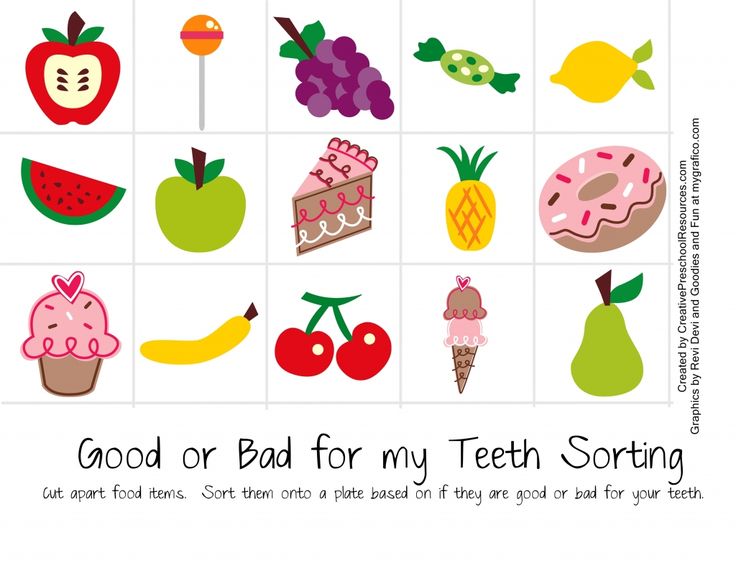
Introduction to solid food: how to teach a baby to chew - Parents.ru
About nutrition
- Photos
It is generally accepted that most babies are ready to be introduced to food in pieces at 6-8 months. In fact, age in the development of chewing skills is not the main thing. The baby should be ready for the introduction of solid foods both physically (to be able to actively work with the tongue and press it correctly against the palate) and psychologically: food interest should “wake up”, the desire to look into the parent’s plate and try what adults eat.
“The appearance of the first chewing movements occurs at 4–5 months, at the same time the gag reflex moves from the middle to the back third of the tongue,” says pediatrician Yulia Rakhimbekova. - And if during this period you do not introduce complementary foods, but continue to stimulate only the sucking reflex, then the chewing reflex that is not supported by practice will begin to fade.
 A few years ago, the baby, before the appearance of the first milk teeth, received drying, crackers or even a chicken bone from his mother and learned to “chew” with his gums. Today, parents often introduce complementary foods after 6 months and later, when 2-4 front teeth have already appeared in the mouth. But these teeth are used for biting, it is impossible to chew them, and - what is important! - they prevent the baby from chewing with their gums. This is how the moment is lost. Further, normally at the age of 7-12 months, the child continues to strengthen the skills of biting and chewing, developing lateral movements of the tongue and the ability to move food to the teeth with the tongue. He is already able to eat cereals, chopped fruits and vegetables. Of course, everything is individual. Full-term or premature, healthy or with health problems, have teeth or have not yet appeared - one way or another, by the year the baby should produce high-quality chewing movements with the jaws.
A few years ago, the baby, before the appearance of the first milk teeth, received drying, crackers or even a chicken bone from his mother and learned to “chew” with his gums. Today, parents often introduce complementary foods after 6 months and later, when 2-4 front teeth have already appeared in the mouth. But these teeth are used for biting, it is impossible to chew them, and - what is important! - they prevent the baby from chewing with their gums. This is how the moment is lost. Further, normally at the age of 7-12 months, the child continues to strengthen the skills of biting and chewing, developing lateral movements of the tongue and the ability to move food to the teeth with the tongue. He is already able to eat cereals, chopped fruits and vegetables. Of course, everything is individual. Full-term or premature, healthy or with health problems, have teeth or have not yet appeared - one way or another, by the year the baby should produce high-quality chewing movements with the jaws. But this will only happen if parents gradually teach him this. It does not happen that a child is fed only breast milk, but at the age of one he sat down at the table, took a spoon and began to eat busily from the common table.
But this will only happen if parents gradually teach him this. It does not happen that a child is fed only breast milk, but at the age of one he sat down at the table, took a spoon and began to eat busily from the common table. If the baby is over two years old, and he is accustomed to pureed food, chews reluctantly or does not know how to chew at all, please be patient: to catch up you will need time - from a month to six months.
Why you need to learn to chew before the age of
The ability to chew solid food is absolutely necessary for a child:
-
for strong teeth
The baby’s inability and unwillingness to chew solid pieces of food leads to a violation of the formation of the bite, and subsequently the oval of the face. Milk teeth are not sufficiently stressed and may fall out prematurely.
The use of products mainly in a puree-like state negatively affects the functioning of the gastrointestinal tract: it provokes the appearance of allergies, intestinal disorders, bloating, and constipation.
 Since the food that you just need to swallow does not mix well with saliva, the baby's digestive enzymes are poorly produced. The gastrointestinal tract becomes "lazy", receiving only tender food, which is no longer for the child's age. As a result, problems grow like a snowball: underdevelopment of the enzyme apparatus, excess weight, increased sensitivity of the intestine.
Since the food that you just need to swallow does not mix well with saliva, the baby's digestive enzymes are poorly produced. The gastrointestinal tract becomes "lazy", receiving only tender food, which is no longer for the child's age. As a result, problems grow like a snowball: underdevelopment of the enzyme apparatus, excess weight, increased sensitivity of the intestine. “The inability to chew is not the direct cause of speech delay or lack thereof,” says speech therapist Tamara Novikova. “At the same time, this is an indicator of negative changes in articulatory tone. It is likely that the child will be uncomfortable, uncomfortable pronouncing some sounds, because this also requires efforts.
“Until the age of 1.5, we ate only pureed food, as we choked on pieces. It didn’t bother me at all: 15 seconds in a blender - and you’re done. To be honest, it was even more convenient for me, because it was faster and easier to feed. Only now he refuses to eat meat ”- a similar story can be found on any parent forum.
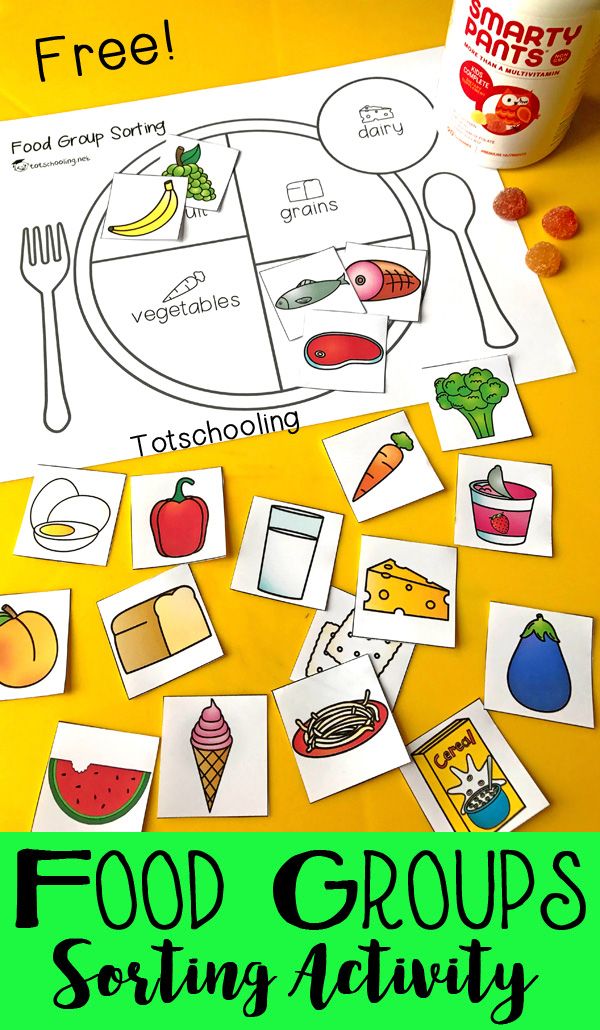 Many mothers feel sorry for their babies (and themselves) by giving them pureed food. But the age of 1–2 years is quite dangerous in terms of manipulating a child with parental opinion. Make every effort to ensure that the little one cannot blackmail you with his unwillingness to chew and swallow hard pieces, because in the future this can turn into much more problems.
Many mothers feel sorry for their babies (and themselves) by giving them pureed food. But the age of 1–2 years is quite dangerous in terms of manipulating a child with parental opinion. Make every effort to ensure that the little one cannot blackmail you with his unwillingness to chew and swallow hard pieces, because in the future this can turn into much more problems. Food "pieces" should appear in the children's diet no later than the first tooth erupts. The ability to chew well is the key to healthy teeth and clear articulation. Why does a baby refuse to chew? Why is this happening?
Too early or abrupt change in the consistency of food
Do not immediately switch from homogeneous puree to food in pieces: at first the baby may simply not understand that it is also edible, and the absence of "normal", from his point of view, food will make him nervous. The logical result of this is streams of tears and a tightly compressed mouth. Do not worry! Each baby has its own pace of development and maturation of body systems.
 If you have introduced solid foods according to all the rules, and the baby stubbornly refuses “solid” foods, consult a specialist (pediatrician, gastroenterologist, neurologist).
If you have introduced solid foods according to all the rules, and the baby stubbornly refuses “solid” foods, consult a specialist (pediatrician, gastroenterologist, neurologist). Disorders of articulatory tone
“The conditions in which a woman today carries and gives birth to a child are far from ideal,” explains speech therapist Tamara Novikova. - A large percentage of expectant mothers work to the last, exposing themselves to stress and hypoxia, drive a car, do not always give up bad habits - all this indirectly affects the development of dysarthria (impaired tone of the muscles of the speech apparatus) in the child in the future, because a weakened fetus is already forming in utero . What do we get next? A tongue that cannot turn food over in the mouth, poor functioning of the muscles that close, raise and lower the jaw, and an unwillingness to chew. Parents who give up breastfeeding too early also do a disservice to the baby. To get milk from the mother's breast, the baby needs to work hard - work his muscles.
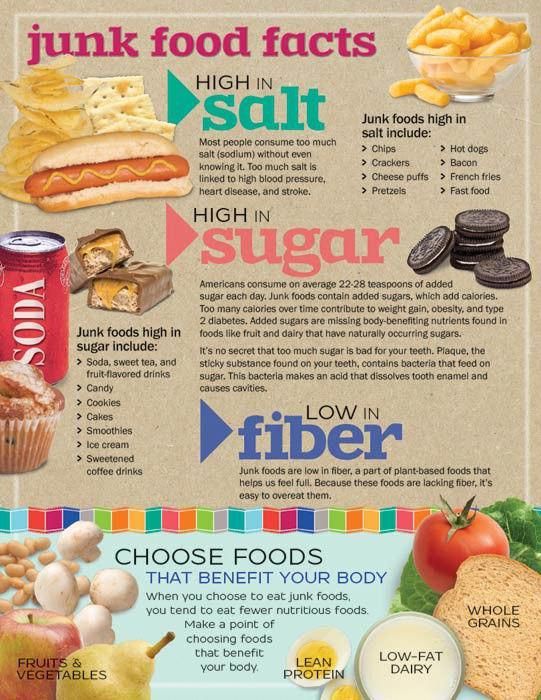 With a regular bottle, articulatory tone is much more difficult to develop. Nevertheless, all these difficulties can be overcome.
With a regular bottle, articulatory tone is much more difficult to develop. Nevertheless, all these difficulties can be overcome. Physiological problems
The baby may refuse to chew even if it is difficult for him to swallow. Trying to cope with solid food can cause him to cough and even vomit. Swallowing disorders may be associated with malfunctions of the gastrointestinal tract or other diseases: for example, tonsillitis, pharyngitis, stomatitis, inflammation of the oral cavity and larynx. “Possible problems that can interfere with high-quality chewing will definitely show up during the child’s medical examination,” pediatrician Yulia Rakhimbekova reassures. - Do not neglect the dispensary appointments of doctors. Up to a year, a child should visit the dentist twice, 4 times - at the neurologist, 3 times - at the surgeon. If necessary (for example, there is a suspicion of a short frenulum of the tongue), the baby can be referred for a consultation with an oral and maxillofacial surgeon.

How to introduce solid foods to your baby
There is no special technique for teaching chewing, because everything should go on as usual. However, with the help of our tips, you will help your baby master this skill faster.
-
- Photo
- Getty Images/Foodcollection
-
Organize a space. Think in advance where the baby will feel most comfortable: in a high chair or on your lap.
-
Pick a moment. It is important that the child is not too hungry - otherwise he will be nervous, and your efforts will go down the drain, but at the same time he wants to eat.
-
Prepare cutlery. Use a light plastic spoon with a rounded handle for feeding - then the baby can use it independently.
-
Consider your diet. “We usually advise mothers to offer their babies pieces of an apple or soft biscuits that they will bite into and thus learn to chew.
 An inquisitive kid will definitely agree to taste a new product, and at the same time understand why he needs his teeth, and practice chewing movements, says Yulia Rakhimbekova. “Any dish that you think is appropriate at the moment will do, considering whether it’s part of dinner, a snack between meals, or a dessert after a hearty meal.” When buying a jar of puree, be guided by the markings on the label: among the jars recommended for the age of 8-10 months, you will definitely find those that say "pieces that teach you to chew."
An inquisitive kid will definitely agree to taste a new product, and at the same time understand why he needs his teeth, and practice chewing movements, says Yulia Rakhimbekova. “Any dish that you think is appropriate at the moment will do, considering whether it’s part of dinner, a snack between meals, or a dessert after a hearty meal.” When buying a jar of puree, be guided by the markings on the label: among the jars recommended for the age of 8-10 months, you will definitely find those that say "pieces that teach you to chew." -
Take your time. Start small meals. If the baby refuses a new complementary food, do not insist. Make the consistency of the offered dishes thicker over time - thanks to this, the need to work with the jaws, lips, and tongue develops. If the dish is too thick, add some water or milk.
-
Take advantage of his curiosity. At 4-7 months, your baby will persistently procrastinate in his mouth and try to chew whatever you give him.
 Your job is to make sure it's safe. The main thing is to avoid sudden transitions in the diet: you should not give hard carrots if before that the baby ate only ground cereals and mashed potatoes.
Your job is to make sure it's safe. The main thing is to avoid sudden transitions in the diet: you should not give hard carrots if before that the baby ate only ground cereals and mashed potatoes. -
Don't distract. Let the baby focus on the process of eating, then the actions of the hands, tongue and lips will be coordinated as much as possible.
- Photo
- Getty Images/Tetra images RF
-
Lay out a “rainbow” on a plate, fold “houses”, “draw” animals from slices of boiled carrots, beans, broccoli and cauliflower, fresh cucumbers and tomatoes. If at first the baby does not chew very well, just feed him with the usual pureed food. Try to cut into pieces first of all the foods that he likes the most.

Learn more
Mom's helper: nibbler
Nibbler is a device reminiscent of the methods of our grandmothers, when some product (an apple or a lump of sugar) was wrapped in gauze and a child without danger to life could procrastinate it in his mouth for a long time. Nibbler promotes the taste of the product, activates salivation and trains chewing movements. The main thing is to monitor the integrity of the mesh and rinse it thoroughly after use.
How to overcome dislike for solid food
“If parents delay the transition of the child to solid food, as a rule, problems begin,” says Yulia Rakhimbekova. - Even a two-year-old baby's eating behavior is already formed, it becomes very difficult to teach him to chew and just make him take something unusual in his mouth. The main advice in this case is not to rush, not to pressure and in no case starve (they say, nothing, get hungry - eat). The transition from pureed food to "pieces" should be gradual. Involve the child in cooking, chop the product together, first in a blender, using a meat grinder or grater, a little later with a fork. Remember that children are very fond of imitating, so be sure to practice “joint dining”, where you will chew food together with great pleasure.
- Even a two-year-old baby's eating behavior is already formed, it becomes very difficult to teach him to chew and just make him take something unusual in his mouth. The main advice in this case is not to rush, not to pressure and in no case starve (they say, nothing, get hungry - eat). The transition from pureed food to "pieces" should be gradual. Involve the child in cooking, chop the product together, first in a blender, using a meat grinder or grater, a little later with a fork. Remember that children are very fond of imitating, so be sure to practice “joint dining”, where you will chew food together with great pleasure.






